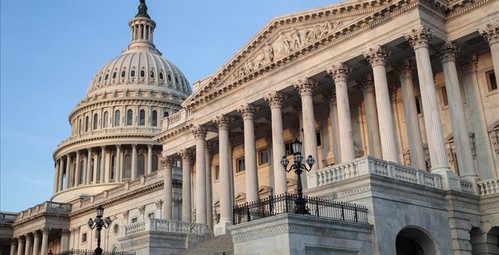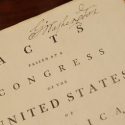Getting Government Under Control
Most Americans don’t expect the federal government to stay out of their lives altogether. What they expect is minimal involvement: Let Washington be the last resort, the one Americans turn to only when they truly can’t devise any alternative.
Given our resourcefulness, that should be rare. As Alexis de Tocqueville, the 19th century French political writer, observed, “The citizen of the United States is taught from infancy to rely upon his own exertions to resist evil and difficulties of life; he looks up on the social authority with an eye of mistrust and anxiety, and he claims assistance only when he is unable to do without it.”
Self-reliance characterized the first settlers in this country, and the U.S. Constitution exemplified that spirit by creating a federal government of separate and limited powers — one strong enough to represent a new nation to the world, but weak enough to allow states and individuals to thrive.
Article 1, Section 8 lays out the specific powers vested in Congress. They range from collecting federal taxes and regulating interstate commerce to raising armies for national defense and declaring war. They include the power to make all laws “necessary and proper” for carrying out any constitutional power — a way to adapt those powers to changing times. As it turns out, the result has been ever more federal laws, stacked as high as the Washington Monument.
On the whole, the Constitution is a marvel of principles and restraint, a unique compass designed to keep the nation both pointed in the right direction and stable in the face of unknowable change in the future. But if we revisit the Constitution’s original impetus — the need to preserve American independence and self-reliance — we realize that what the document does not say is no less important than when it does say.
For example, it does not mention such activities as education, medical care, and retirement security. These issues and others affect self-reliance in profound ways. The framers excluded them from the Constitution almost certainly because, at the time, most Americans thought they were none of the federal government’s business and were best carried out by individual citizens.
When this important separation of federal and local functions is breached, problems begin. The poor state of our school system is a classic example.
Since 1965, the federal government has spent more than $2 trillion (inflation-adjusted) on K-12 education, according to testimony delivered by Andrew Coulson before the House Education and the Workforce Committee. Shouldn’t the logical result be all sorts of wonderful academic improvement in U.S. schools?

It hasn’t worked out that way. Since 2012, test scores for American schoolchildren have fallen steadily behind those in Britain, Japan, the Netherlands, Singapore, and most other industrial nations. In 2015, for example, the United States ranked 35th in math, down from 28th just a few years earlier, coming in behind the Slovak Republic, Hungary and Lithuania. In other words, it looks as though education ranks among the black holes of federal spending.
The existence of the Education Department is proof that subpar educational performance is a national problem that millions of Americans yearn to solve. But that does not make it a federal issue. Because there is also proof that federal bureaucrats have almost zero chance of truly solving those problems.
It is clearly impractical to demand that the federal government immediately withdraw from education, health care, and all the other areas in which its current vast presence is, to the minds of many conservatives, clearly unconstitutional. It is too late, as well as politically impossible, to try to lock that barn door. The intruders are already acting like owners.
But we can, and must, try to keep the remaining horses under local control. With patience, persistence, and citizen involvement, it should even be possible to recapture some of the stolen ponies — and help restore the federal government’s proper role.





